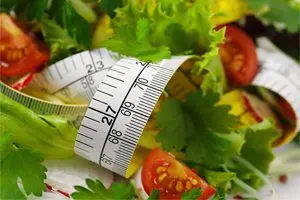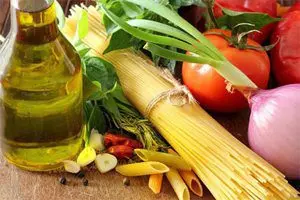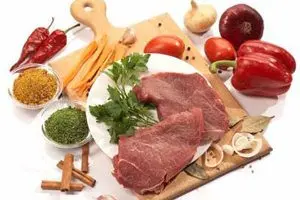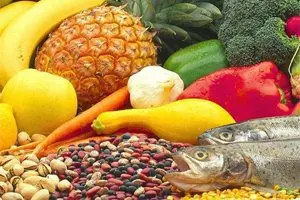Contents

According to doctor Peter D’Adamo (USA), the blood type and genetic characteristics of each person greatly affect how the body absorbs nutrients. Based on his beliefs, he developed weight loss programs called “blood type diets”.
In order for the body to fully function, a person must eat only those foods that suit him. If you refuse food that is incompatible with the blood type, then all organ systems will work much better, the intestines will be cleansed, which will lead to a decrease in body weight. Of course, provided that the weight was really superfluous.
The first book, which was written by Peter D’Adamo, appeared in the world in the last century (1997). Then several more volumes came out, which reflected the doctor’s concept of “4 blood types – 4 ways to health” (“Eat Right 4 Your Type”). All volumes received public approval and became a guide to action for hundreds of thousands of Americans. Many began to follow his recommendations, including those people who have weight problems.
The popularity of publications is gaining momentum every day. Not surprisingly, after only a few years, Dr. D’Adamo was recognized as the leading nutritionist in his country. He opened his own clinic, which is located in the city of Portsmouth. Many well-known personalities became clients of the doctor. Stars such as Oprah Winfrey, Demi Moore, Miranda Kerr openly talk about the commitment to nutrition by blood group.
The essence of the blood type diet

All people are divided into 4 types: in Russia there are 1, 2, 3, and 4 blood groups, and in the USA the gradation looks a little different. The ABO scale is recognized there. O is the 1st blood group, A is the 2nd group, B is the 3rd group, AB is the 4th group.
Everyone needs to eat differently. It’s best to only choose foods that match your blood type. If you do not follow these recommendations, then there are multiple health problems, including obesity. Its main reason is the inability of the body at the genetic level to absorb food that is not suitable for it. The blood type diet also refers to foods that can be eaten by all people, as they are neutral. However, they need to be eaten in small quantities.
Physical activity should correspond to the blood type. If the owners of the first blood type are more suitable for running and strength exercises, then people with the second blood type should do moderate exercise, for example, yoga.
The diet involves the intake of vitamins and minerals, depending on the blood type. They are needed to maintain good health.
There is a certain set of foods that the diet prohibits people with any blood type from eating. For example, this applies to pastries, sugar, fast food, soda. Dr. Peter D’Adamo considers them 100% unnatural to the human body. If you remove everything unnatural from the diet, then getting rid of excess weight is not difficult. After all, the calorie content of the menu will be significantly reduced.
You need to develop good eating habits. You always need to think about how good the quality of the food that enters the stomach. If you adhere to this principle, then after a short period of time, harmful products will completely disappear from the menu. Along with them, extra pounds will also go away.
Without adequate physical activity, it will not be possible to get rid of excess weight. With exercise, you can lose weight faster, as it will be easier for the body to control hunger. This, in turn, will prevent overeating.
In a blood type diet, a person will not meet recommendations regarding a specific amount of food that can be eaten at a time or per day. The doctor does not force people to eat by the hour, because this can lead to feelings of hunger. It is important to correctly compose the menu, this will allow the body to control appetite. He will appear when the time is right. The blood type diet is not a dietary restriction, but a new approach to your eating behavior. The system allows you to review your eating habits and improve your health.
As reviews from people who have followed a diet by blood type show, it is not possible to get rid of extra pounds right away. This should take at least 6 months. After all, this technique, by and large, is not a diet for weight loss, but only a program of proper and healthy nutrition. In addition, Peter D’Adamo himself does not at all give any guarantees that a person will lose weight. However, the doctor notes that his diet can be used by people suffering from obesity and diseases of the digestive system. It allows you to improve your well-being and get rid of many health problems.
Diet for 1 blood type “Hunter”

The author of the diet conditionally calls people with the first blood group hunters. This blood type is the oldest, in the process of evolution, it was from it that other groups originated. Worldwide, there are about 33,5% of people with the first blood group. People with such blood are considered strong and self-sufficient, have the qualities of a leader. In America, they are classified as type O (the first group).
The main characteristics of the “hunters”:
Strong immune and digestive system. The body is designed for high-quality metabolism, has a high ability to extract nutrients (carbohydrates, minerals, vitamins, fats and other biological elements necessary for cell function).
Weak ability to adapt to changing environmental conditions, to innovations in the usual diet. Tendency to allergies (strong immunity can attack the body’s own cells).
Hunters are prone to diseases such as arthritis (inflammatory process in the joints), stomach and duodenal ulcers (due to increased acidity of gastric juice), and allergies. There may be disturbances in the process of hemocoagulation.
People with the first blood group are shown taking vitamins and minerals such as manganese, potassium, iodine, as well as vitamin K, B vitamins. Pancreatic enzymes may be taken. It is necessary to refuse the additional intake of vitamins A and E.
People belonging to the category of “hunters” must follow the following recommendations:
To start the metabolic processes in full force and with their help get rid of excess weight, it is necessary to exclude all wheat-based products from the menu. The same applies to legumes, corn, lentils. As a result, nothing will interfere with the normal production of insulin, and the metabolism will accelerate.
You should refuse any cabbage, except for broccoli. The same applies to all oat-based dishes. After entering the body, they interfere with the normal production of thyroid hormones, and the metabolism slows down.
All products that contain iodine in their composition must be on the menu. For example, algae, spinach, seafood. You need to salt dishes with salt enriched with iodine.
To normalize the functioning of the thyroid gland, it is necessary to include foods such as radish, radish and daikon in your diet. You can pass them through a juicer along with carrots.
To disperse the metabolism allows the use of red meat and liver.
You need to do active sports. As for the use of medications, it is worth taking acetylsalicylic acid with extreme caution.
Diet for people with the first blood group: what is possible and what is not
Can eat | Can’t eat | Neutral Products |
Ground beef, turkey meat, veal, lamb, beef, liver and heart | Salo, pork, goose meat, bacon and ham, ham | Rabbit, duck, broiler chickens, eggs, chickens |
Sturgeon, halibut, pike, seaweed, trout, hake, salmon, mackerel, cod | Herring (marinated and salted), smoked red fish, catfish meat, caviar | Representatives of crustaceans, squid, smelt, perch, tuna, pike perch, carp, flounder, eel |
| — | Cheeses (processed and made from cow’s milk), whey, sour cream, cream, kefir, ice cream, goat’s milk | Curd cheeses, cottage cheese, sheep’s milk cheeses |
pumpkin seeds, walnuts | Poppy, pistachios, peanuts | Hazelnuts, pine nuts, sunflower seeds, almonds |
Olive and linseed oil | Corn, cottonseed, soybean and peanut oils | Sunflower oil, butter, margarine, cod liver oil |
Soy milk, soy cheese, spotted beans | Beans (lentils) | Peas (in pods), beans (soybeans, green peas, black beans), beans (white and asparagus) |
Curry, parsley | Vanilla, ketchup, nutmeg, black pepper, vinegar (apple, white, wine), pickles, marinade, cinnamon | Bay leaf, sugar, cumin, dill, mustard, cloves, fruit-based jam and jelly, fennel seeds, mayonnaise, horseradish, paprika, honey and chocolate |
| — | Semolina, pasta, corn (on the cob, porridge, bread), muesli, wheat (cereals, bread, any pastries), oatmeal and oatmeal cookies | Barley groats, buckwheat groats and buckwheat flour, barley groats, rye, rice groats and rice wafers, millet, rye flour (bread and bread from it) |
Cabbage (kohlrabi and broccoli), watercress, turnips, hot peppers, parsnips, beets (leaf), chicory, spinach, pumpkin, turnips, sweet potatoes, ground potatoes. | Cabbage (white, Beijing, cauliflower, Brussels sprouts, leafy), potatoes, mushrooms, rhubarb | Oyster mushrooms, zucchini, chives, carrots, tomatoes and cucumbers, beets, asparagus, radishes and radishes, swede, lettuce |
Tea with rose hips, linden, dandelions, parsley | Tea with St. John’s wort, burdock, coltsfoot, strawberries | Tea with hawthorn, licorice, mint, raspberry, thyme, valerian, chamomile, ginseng, echinacea |
Apples, cherries, plums, cherry plums, figs, prunes | Avocados, blackberries, oranges, coconuts, olives, strawberries, tangerines, melon | Watermelon, pineapple, barberry, banana, cowberry, cherry, grape, grapefruit, blueberry, pomegranate, raisin, kiwi, cranberry, lemon, raspberry, nectarine, peaches, currant, blueberry, persimmon |
| — | Vodka, tincture, cognac, coffee, cola, lemonade, black tea | Green tea, beer, wine (red and white). |
Menu for the week for people with the first blood type
| Breakfasts (first and second) | Lunches and snacks | Dinner |
Monday | 1 breakfast: buckwheat with soy milk, soy cheese, rosehip tea. 2 breakfast: apple | Beef chop, salad with olive oil (broccoli + carrots) Snack: a handful of walnuts | Boiled mackerel, greens |
Tuesday | 1 breakfast: Barley porridge, boiled egg (2 pcs.), Rosehip tea. 2 breakfast: figs | Grilled vegetables and lamb, salad (spinach + beet leaves) Snack: a handful of walnuts | Baked trout fillet with lemon dressing, salad (baked beets + olive oil) |
Wednesday | 1 breakfast: soy cheese, rye flour bread, egg (2 pcs.), Rosehip tea. 2 breakfast: salad (pumpkin seed + seaweed) | Spotted beans with fried veal, lettuce (ground potatoes) Snack: cherry juice | Baked pike, herb salad (leek + parsley + watercress salad) |
Thursday | 1 breakfast: barley porridge with soy milk, soy cheese, rosehip tea. 2 breakfast: plums | Roasted turkey with prunes, stewed pumpkin with herbs, greens Snack: a handful of walnuts | Fried halibut, sweet potato and asparagus |
Friday | 1 breakfast: Rice porridge, grapefruit (1/2), rosehip tea. 2 breakfast: persimmon | Stewed liver with onions, stewed vegetables (zucchini + peppers + carrots) Lunch: a handful of walnuts | Lightly salted herring fillet, lettuce (cucumber + tomato) |
Saturday | 1 breakfast: soy cheese, rye flour bread, peaches (2 pcs). 2 breakfast: a glass of tomato juice. | Beef heart with onions and carrots, salad (kohlrabi cabbage + greens). Snack: a handful of almonds. | Baked hake, boiled green peas, salad (radish + cucumber + greens). |
Sunday | 1 breakfast: boiled egg (2 pcs.), soy cheese, rye bread, linden tea. 2 breakfast: kiwi | Beef cutlets, zucchini-carrot puree, green salad. Snack: a handful of hazelnuts. | Braised cod, stewed vegetables, salad (prunes + beets). |
Diet for blood type 2 “Farmer”

The author of the diet conditionally calls the owners of the second blood group “farmers”. In America, they are classified as type A. This blood type appeared a little later than the first group, when people began to wander less. Worldwide, about 37,8% of people have exactly the second blood type. Representatives of the “farmers” have such personal qualities as constancy, quick adaptation in a new team, self-discipline.
The main characteristics of the “farmers”:
Ability to quickly adapt to changing environmental conditions. Good adaptation to a change in diet.
When eating plant-based foods (vegetarianism), the digestive system and immunity will function perfectly.
The digestive organs are quite sensitive, the immune system does not sufficiently resist infectious diseases. The nervous system is not always stable.
Diseases such as anemia, pathologies of the liver and gallbladder, oncology, heart problems, and diabetes are not excluded.
Farmers are recommended to take iron, selenium, chromium, calcium and zinc. Vitamins C, E, B are good for people with the second blood group. Preparations containing bifidobacteria are useful.
Farmers should follow these guidelines:
Refuse meat (except for turkey and chicken), since the acidity of gastric juice in people with blood group 2 is lowered. This greatly complicates the process of protein digestion.
Meat does not give “farmers” energy, does not speed up, but slows down metabolic processes. Therefore, fat begins to accumulate.
Switching to a vegetarian diet will normalize the functioning of the immune system.
You can not eat spicy dishes (pepper, vinegar, ketchup), tomatoes are prohibited. Refuse should be from fruits and berries with acid. Mayonnaise is not suitable for people with the second blood group; hot spices should not be added to food. You also need to give up salted fish, cucumbers, cabbage (with the exception of broccoli), potatoes. It is allowed to eat carrots, onions and garlic.
All sour-milk drinks are well absorbed by the body (milk drinks are worse), low-fat cheeses, feta cheese and cottage cheese can be used.
To make up for the lack of protein, it is necessary to give preference to soy products.
You can eat eggs.
Chocolate and sugar are allowed, but in limited quantities.
Diet for people with the second blood group: what is possible and what is not
>
Can eat | Can’t eat | Neutral Products |
| Veal, lamb, beef, rabbit, pork, duck, lard, ham, bacon and ham | Chicken meat, turkey, egg |
Carp, fresh herring, mackerel, mackerel, cod, trout, pike perch, salmon | Squid, flounder, smoked red fish, salted and pickled herring, catfish, halibut, catfish, caviar | Algae, pike, tuna, perch, sturgeon, smelt |
Olive and linseed oil | Coconut, cottonseed, corn, peanut, butter | Fat, margarine, soybean and sunflower oil, cod liver oil |
| Milk, ice cream, cow’s milk cheese, whey | Kefir, sour cream, cottage cheese and curd cheese, sheep cheese, yogurt, goat milk |
Beans (black and soy), cheese (soy), milk (soy), beans (spotted), beans (soy and black), lentils | Navy beans | Green and green peas, white and asparagus beans |
Mustard | Ketchup, mayonnaise, vinegar (apple, wine, white), black pepper | Fruit jellies and jams, vanilla, bay leaf, sugar, cumin, cloves, parsley, curry, dill, fennel, nutmeg, chocolate, marinades, honey, pickles, paprika |
Buckwheat and buckwheat flour products, rye and rye bread, rye flour products, oatmeal, rice wafers | Semolina, pasta, crackers, muesli, pastries, including bagels and bagels, bread (cereal and wholemeal), wheat flakes and wheat, all products made from durum flour | Barley groats, corn, pearl barley, rice groats, oatmeal cookies, barley, wheat bread, cornstarch, millet |
Kale, broccoli, kohlrabi, oyster mushrooms, feather onions, leeks, watercress, pumpkin, Jerusalem artichoke, spinach, chicory, beetroot, parsnips, turnips, carrots, onions | Chinese cabbage, red, white, cauliflower, champignons, peppers (sweet and hot), tomatoes, rhubarb | Cucumbers, celery, lettuce, beetroot, radish, asparagus, swede, Brussels sprouts, zucchini |
Tea with St. John’s wort, burdock, hawthorn, ginseng, echinacea, chamomile, valerian, rosehip |
| Raspberry, linden, strawberry, mint, dandelion tea. Tea with parsley, licorice, thyme, yarrow |
Cherry plum, pineapple, lingonberry, cherry, blueberry, grapefruit, fig, cranberry, lemon, plum, sweet cherry, blueberry, apple | Bananas, oranges, barberries, olives, coconuts, tangerines, melons | Watermelon, avocado, grape, pomegranate, raisin, kiwi, strawberry, gooseberry, nectarine, peach, raspberry, pear |
Coffee, red wine, green tea | Black tea, beer, cola, lemonade, tinctures, vodka, cognac | White wine |
Menu for the week for people with the second blood type
| Breakfast | Lunch and afternoon tea | Dinner |
Monday | 1 breakfast: buckwheat porridge, rye bread, kefir and chamomile tea. 2 breakfast: apple | Carp from the oven with lemon sauce, broccoli and carrots stewed with mushrooms, soaked pickles Afternoon snack: a handful of walnuts | Tuna, lettuce (white beans + green peas + asparagus beans) |
Tuesday | 1 breakfast: rice waffles, boiled eggs, salad (Jerusalem artichoke + spinach). 2 breakfast: 1/2 grapefruit | Pike perch with grilled vegetables, lentil puree, greens. Afternoon snack: a handful of almonds | Boiled cod, seaweed |
Wednesday | 1 breakfast: barley porridge, soy cheese, rye bread. 2 breakfast: blueberries | Boiled turkey, pumpkin puree with rice, salad (greens + cucumber) Afternoon snack: a handful of hazelnuts | Baked salmon, zucchini and grilled carrots, greens |
Thursday | 1 breakfast: barley porridge, soy milk, raisins, pears, hawthorn tea. 2 breakfast: pineapple | Stewed carrots with mushrooms and onions, rye flour bread. Afternoon snack: a handful of pine nuts | Boiled pike perch, boiled green peas, sauerkraut with green onions |
Friday | 1 breakfast: corn porridge, yogurt. 2 breakfast: grapes | Boiled chicken, buckwheat, pickled vegetables. Afternoon snack: a handful of peanuts | Baked trout, beans (soy), lettuce (greens + turnips) |
Saturday | 1 breakfast: cottage cheese with dried fruits, bread, cherry juice. 2 breakfast: raspberries. | Salad with carrots and apples, seafood. Afternoon snack: sunflower seeds | Baked herring, salad (cucumber + greens) |
Sunday | 1 breakfast: oatmeal, milk (soy), fruit jelly. 2 breakfast: peach | Chicken meat, zucchini with onions, bean puree, greens. Afternoon snack: a handful of cashews. | Baked salmon, lentil puree, sauerkraut with peas |
Diet for 3 blood group “Nomad”

The author refers people with the third blood group to the group of “nomads”. There are about 20,6% of such representatives worldwide. In the process of evolution, the population was divided into several races, resulting in the emergence of a third blood type (type B). They have good immunity and are able to eat almost any food. The nervous system of such people is very stable.
The main characteristics of nomads:
Stable immunity, fast adaptation to changes in the menu, high adaptability to changing environmental conditions.
If the “nomads” strongly deviate from the diet, then the development of autoimmune diseases is possible. Such people are susceptible to rare infections.
It is possible to develop diseases such as multiple sclerosis, autoimmune diseases.
People with the third blood group are shown taking magnesium, licorice and lecithin.
Nomads must adhere to the following recommendations:
In order not to gain extra pounds, you need to stop eating buckwheat, corn and peanuts. Do not eat sesame seeds. If these conditions are not met, insulin is produced poorly, which leads to a slowdown in metabolic processes, increased fatigue, and obesity.
Do not get carried away with wheat, as it reduces the rate of metabolic processes. Moreover, it cannot be combined with other prohibited cereals, which will only aggravate the situation.
Diet for people with the third blood group: what is possible and what is not
What can you eat | What can’t be eaten | Neutral Products |
Eggs, rabbit, lamb | Chicken meat, pork, duck, goose, ham, ham, bacon | Turkey, veal, cow meat, minced beef, liver |
Mackerel and pickled herring, hake, cod, pike, zander, mackerel, salmonids, halibut, sturgeon, flounder, trout, sea bass | Seaweed, caviar, smoked salmon, all crustaceans, eel | Fresh and salted herring, carp, river perch, tuna, catfish |
Olive oil | Cottonseed, peanut, coconut, corn, sunflower, soybean, margarine | Linseed oil, butter, cod liver oil |
Sour cream, cottage cheese and curd cheese, yogurt, kefir, goat’s milk, sheep’s milk cheese | Ice cream | Cream, cow’s whole milk cheeses, cow’s milk, processed cheese, whey, casein |
Poppy | Pumpkin seeds, peanuts, pine nuts, sunflower seeds, hazelnuts, pistachios | Walnuts, almonds |
Horseradish, curry, parsley | Mayonnaise, cinnamon, ketchup | Vinegar (white, wine, apple), sugar, chocolate, fruit jellies and jams, nutmeg, honey, vanilla, cinnamon, cloves, coriander, bay leaf, cumin, paprika, dill |
Oatmeal, oatmeal and oatmeal cookies, rice and rice waffles, millet, wheat bread | Corn (grain, flakes and flour), muesli, wheat, rye, all products made from wheat and rye flour, buckwheat, pearl barley, barley groats and all flour products based on these groats | Flour products from durum wheat, crackers, rye buns and gingerbread, pasta, semolina |
Soybeans and navy beans | Lentils, spotted beans, black beans | Soy milk and cheese, asparagus and white beans, green peas and green peas |
Broccoli, Brussels sprouts, cauliflower, collard greens, red and white cabbages, collard greens, watercress, peppers (both sweet and spicy), carrots, sweet potato | Pumpkin, potato, radish, tomato, radish, rhubarb | Cucumbers, lettuce, beets, spinach, zucchini, onions and feathers, leeks, kohlrabi, turnips, parsnips, ground potatoes, mushrooms, chicory |
Raspberry tea, tea with licorice, parsley, rosehip, ginseng | Linden tea, coltsfoot tea | Chamomile, dandelion, mint, strawberry tea. Tea with dandelion, yarrow, thyme, echinacea, hawthorn, St. John’s wort and valerian |
Green tea | Cola, lemonade, vodka, tinctures, cognac | Beer, coffee, white and red wine |
Coke, pineapple, apple, grape, cherry plum, cranberry, plum, lingonberry, banana, grape | Olives, persimmon, barberry, avocado, pomegranate | Kiwi, strawberries, gooseberries, figs, raspberries, peaches, lemons, nectarines, blueberries, currants, cherries, prunes, watermelon, cherries, oranges, grapefruit, blackberries, raisins, blueberries, melons, pears, blackberries |
Menu for the week for people with the third blood group
| Breakfast and second breakfast | Lunch and afternoon tea | Dinner |
Monday | 1 breakfast: chicken egg (2 pcs.), Cottage cheese with raisins, wheat flour bread 2 breakfast: apple | Braised lamb, rice grits, salad (olive oil + sweet potato) Afternoon snack: a handful of almonds | Flounder baked in the oven, grilled vegetables |
Tuesday | 1 breakfast: milk noodle soup, pineapple juice 2 breakfast: orange | Rabbit with sour cream sauce, mashed green peas, salad (cabbage + carrots) Afternoon snack: a handful of walnuts | Oatmeal cookies with kefir, peach |
Wednesday | 1 breakfast: cottage cheese casserole, sour cream, egg, salad (cucumber + greens) 2 breakfast: cherry | Mushroom soup, salad (cabbage + greens), wheat bread Afternoon snack: yogurt | Hake, vinaigrette |
Thursday | 1 breakfast: cottage cheese pancakes with sour cream, 1/2 orange, wheat flour bread 2 breakfast: banana | Boiled beef, boiled beans (white), carrot-apple juice Afternoon snack: kefir and berries | Baked mackerel, salad (apple + walnuts + beetroot) |
Friday | 1 breakfast: scrambled eggs, wheat bread, cheese 2 breakfast: dried fruits (dried apricots and raisins) | Soup with turkey hearts, fruit yogurt Afternoon snack: banana | Boiled trout fillet, stewed vegetables (carrots, onions, zucchini) |
Saturday | 1 breakfast: oatmeal, wheat bread, cheese 2 breakfast: pear | Fish soup, boiled rice, salad (cucumber + greens) Afternoon snack: a handful of walnuts | Cabbage rolls stuffed with minced beef, coleslaw |
Sunday | 1 breakfast: scrambled eggs, yogurt, wheat bread 2 breakfast: carrot juice | Baked veal in foil, grilled vegetables, salad (greens + Chinese cabbage) Afternoon snack: a handful of almonds | Baked cod, soybeans, sweet potato salad |
Diet for 4 blood group “Mixed type”

The author of the diet classifies representatives of the 4th blood group as a mixed type. There are no more than 8% of such people in the world. They have low immunity, a weak digestive system. A mixed diet of “nomads” and “hunters” is suitable for such people.
Characteristics of people of “mixed type”:
The immune system, although very flexible, is at the same time susceptible to various infections. There are strengths of both “nomads” and “hunters”.
The digestive system is quite weak.
There are risks of developing diseases such as anemia, oncology, heart disease. People with the 4th blood group are shown taking vitamin C, zinc, selenium, hawthorn, valerian, echinacea.
If a person has 4 blood group, then he must adhere to the following recommendations:
The acidity of the gastric juice may be lowered, but nature has programmed such people to eat meat (mixed type A and type B). Therefore, despite the fact that you can eat meat, the body will not be able to fully break it down. As a result, excess weight will accumulate.
To prevent obesity, you need to eat as much tofu and vegetables as possible.
People with a mixed type are advised to stop eating corn, buckwheat, legumes.
It is possible that a strong weight gain from wheat in people of mixed type will not occur, however, it must be consumed in limited quantities.
Diet for people with the fourth blood group: what is possible and what is not
What you can eat | What not to eat | Neutral Products |
Rabbit, lamb, turkey | Chicken meat, heart, ham, pork, ham, duck, beef and ground beef, veal, goose meat, bacon | Liver, egg, fat |
Pike, cod, zander, salmonids, trout, caviar, sea bass, sturgeon, mackerel, mackerel | Pickled and salted herring, hake, squid, smoked salmon, halibut, squid, all crustaceans, eel | River perch, fresh herring, carp, catfish, smelt, catfish, seaweed |
Olive oil | Sunflower, corn, butter, coconut, cottonseed oil, margarine | Flaxseed, soybean, peanut, cod liver oil |
Sheep cheese, curd cheese, sour cream, cottage cheese, yogurt, goat milk, kefir | Processed cheese, cream, ice cream, whole milk | Whey, cow’s milk cheese, fat-free milk |
Walnuts, peanuts, poppy | sunflower seed, pumpkin seed, hazelnut | Almonds, pine nuts, pistachios |
Rice, rice waffles, rye bread, rye flour, rye bread, oatmeal, oatmeal, millet | Corn (flour, cereals, flakes, starch), buckwheat (flour and cereals) | Oatmeal cookies, cracker, rye gingerbread, bread (wheat, wholemeal), wheat flakes, muffins, bagels, barley groats, semolina, pasta, muesli, durum wheat flour |
Beans (navy, spotted, soy), lentils | Black beans | Beans (asparagus, white), cheese and milk (soy), peas (green and green) |
Parsley, horseradish, curry | Vinegar (wine, white, apple), ketchup, black pepper, pickles and pickles | Bay leaf, fennel, paprika, dill, cumin, cloves, mustard, cinnamon, coriander, honey, mayonnaise, sugar, fruit jam and jelly |
Grapefruit, lemon, kiwi, gooseberry, grapes, cherries, figs, cherry plums, apples, coconuts, plums, sweet cherries, lingonberries | Orange, banana, avocado, persimmon, pomegranate, barberry | Olives, tangerines, raspberries, currants, peaches, nectarines, blueberries, blueberries, watermelon, strawberries, prunes, raisins, blueberries, blackberries, melons |
Cucumber, parsnip, beet leaves, sweet potato, broccoli, cabbage (leaf and cauliflower), hot and sweet peppers, watercress | Radish, rhubarb, lettuce, radish | Onion (feather, leek, bulb), turnip, carrot, asparagus, beetroot, head lettuce, tomatoes, pumpkin, ground potatoes, mushrooms, chicory, spinach, zucchini, oyster mushrooms, swede, white cabbage, Chinese, Brussels sprouts, kohlrabi, potatoes |
Coffee and green tea | Cola, black tea, vodka cognac, tinctures | White and red wine, beer |
Chamomile tea, strawberry tea, licorice, rosehip, ginseng, hawthorn and burdock tea | Linden tea, coltsfoot tea | Dandelion, raspberry, mint tea, tea with parsley, valerian, thyme, yarrow. |
Menu for the week for people with 4 blood groups
>
| First and second breakfast | Lunch and afternoon tea | Dinner |
Monday | 1 breakfast: sheep’s milk cheese, cherry yogurt, rye bread 2 breakfast: apple | Braised liver, boiled spotted beans, green tea Afternoon snack: a handful of peanuts | Stove sturgeon, stewed broccoli, salad (olive oil + cucumbers, watercress) |
Tuesday | 1 breakfast: cottage cheese with raisins, rice waffles, greens 2 breakfast: 1/2 grapefruit | Soup with zander, carrots and onions, lentil puree, salad (leaf beetroot + celery) Afternoon snack: a handful of almonds | Braised lamb, grilled vegetables, soybeans |
Wednesday | 1 breakfast: scrambled eggs, rye bread 2 breakfast: cranberries with gooseberries | Stewed turkey with zucchini and onions, greens, lettuce (carrot + red cabbage) Afternoon snack: a handful of almonds | Grilled sea bass, boiled potatoes, lettuce (cucumber + tomato + greens) |
Thursday | 1 breakfast: cottage cheese with raisins, rye bread 2 breakfast: nectarine | Vegetable soup, fried cod, salad (turnip + greens) Afternoon snack: a handful of pine nuts | Braised rabbit with tomato paste, salad (fresh greens + kohlrabi) |
Friday | 1 breakfast: boiled egg, kefir, rye bread, rosehip tea 2 breakfast: apple | Baked trout, stewed oyster mushrooms with broccoli and carrots, soaked pickles Afternoon snack: a handful of walnuts | Fried catfish, salad (broccoli + sweet pepper) |
Saturday | 1 breakfast: scrambled eggs, rye bread, 1/2 grapefruit 2 breakfast: currant | Vegetable soup, baked herring, salad (green peas, asparagus, watercress) Afternoon snack: a handful of pistachios | Braised lamb, boiled rice, salad (baked beets + garlic + prunes) |
Sunday | 1 breakfast: yogurt, cheese, rye bread 2 breakfast: orange | Boiled turkey, boiled pumpkin with rice, salad (cucumber + greens) Afternoon snack: a handful of hazelnuts | Baked salmon, grilled carrots with zucchini, greens |
Do Rh positive and negative factors affect the diet?
In the vast majority of cases, people have a positive Rh factor in the blood. It is negative only in 17% of people worldwide. It is worth noting that there will be no difference in the diet for them. The menu is selected exclusively by blood type.
Dietitian Reviews

Two large studies (UK 2011 and Canada 2014) have shown that there is no relationship between diet and blood type. In the first experiment, 14 women took part, and in the second, 000 people of different sexes. There was no pronounced weight loss or healing effect in any group.
Nutritionist Lyudmila Denisenko claims that so far there is not a single scientific confirmation that there is a relationship between blood type and food consumed. She believes that the Rh factor must also influence the diet in this case.
L. Denisenko points out that not a single protein enters the blood in its pure form, since in the digestive tract they are all broken down into amino acids. Therefore, the blood simply cannot “recognize” which protein has entered it (vegetable or animal).
In addition, each person has his own lifestyle, people exist in different climatic conditions (some live in the Tundra, while others live in the tropics), so there can be no single diet for blood type either.
However, the described diet has some positive aspects:
No need to count kilocalories;
There are no sweets, muffins, sugar and fast food on the menu, which in itself allows you to lose weight and improve your health;
There are recommendations for doing physical exercises;
The diet is pretty balanced.
According to L. Denisenko, the proposed diet will allow you to lose weight only due to the fact that a person will limit himself in sugar and start playing sports. Therefore, such a diet will not harm health.
Another doctor of the highest category and well-known nutritionist Rimma Moiseenko emphasizes that it is impossible to choose a universal diet for all people on the planet who have a common blood type. For example, if the “farmer” has gluten intolerance, and the “hunter” has gout, then what about in this case? The question is rhetorical.
However, the doctor does not speak out radically against the blood type diet, calling it useful. After all, it prohibits the use of alcohol, coffee, sugar, fatty foods. Ultimately, this will definitely lead to weight loss.









